Home to some of the oldest shrines in Japan, Kurama and Kibune are two quaint villages located in the mountainous regions of rural Kyoto. Getting here from Kyoto is easy – Kurama station is only a 40–minute ride away from Demachiyanagi Station, and Kibune is a walking distance away from Kurama! With mystical mountains and secluded trails, Kurama and Kibune will not disappoint those who desire an adventure off the beaten path. Now, join us on this specially curated itinerary as we introduce these two rustic villages to you on a day trip out of Kyoto!
Meet the guardians of the mountain
You know you’re at the right place if this is the first thing you notice when you alight at Kurama station:
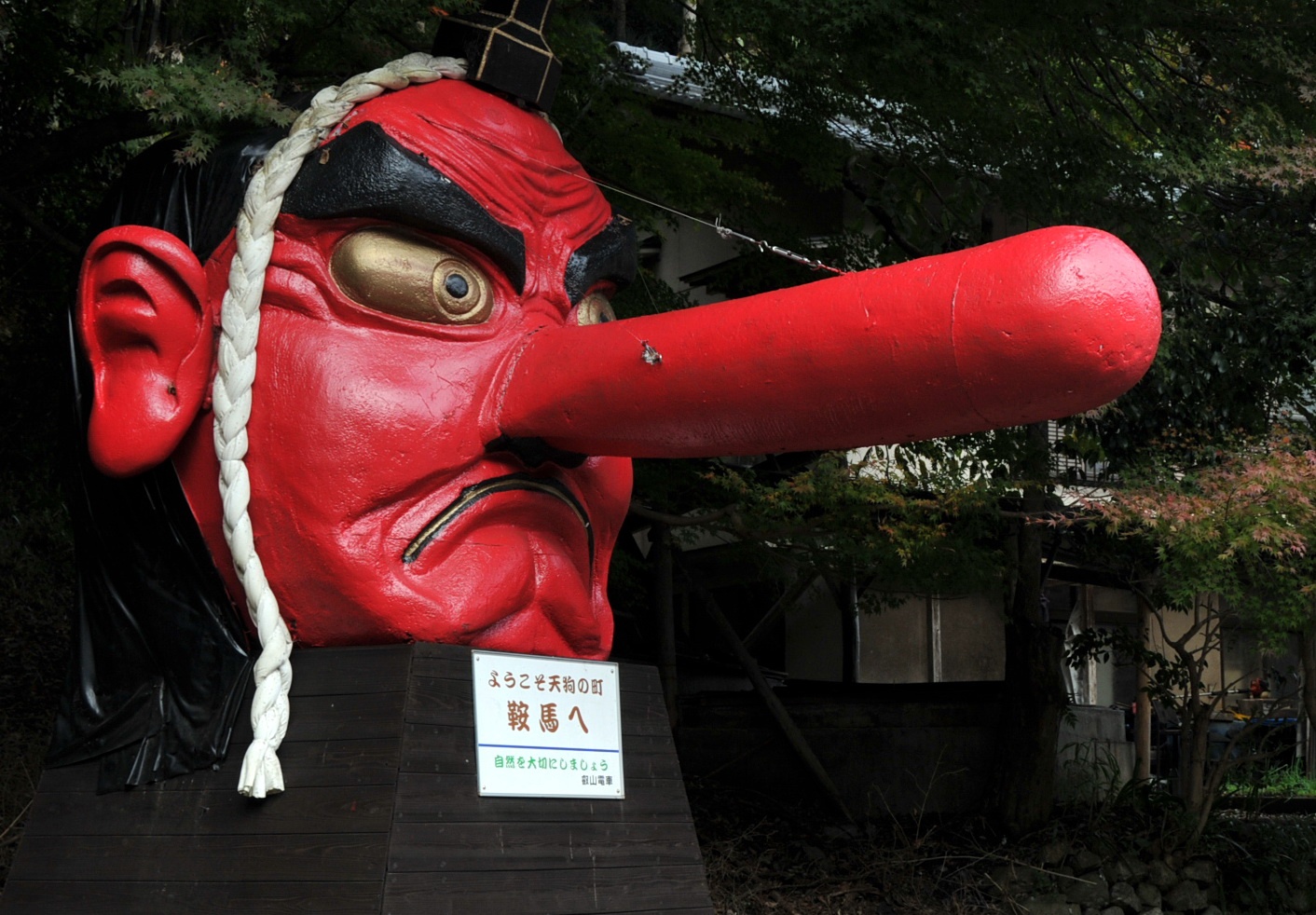
Sōjōbō, the Tengu boss who lives in and protects Mount Kurama | Image credit: lj16
Yes, Mr Tengu right there is the guardian of Mount Kurama. In fact, the mysterious Mount Kurama is said to be inhabited by the Tengu and his henchmen. Legend has it that he used to have a bird beak before it was humanised into an unnaturally long nose, which the Japanese now unabashedly celebrate as a phallic symbol. Today, this intimidating (and slightly comical) creature stands guard at Kurama station to welcome all pilgrims and travellers. From where he is, you are just a short walk away from the heart of Kurama.
Soak in outdoor onsens with a view to die for
Kurama has long been famed for being a perfect sanctuary for those seeking refuge from the bustling city life. The therapeutic dose of nature and breath of fresh mountain air will rejuvenate even the most tired of souls. Its luscious greenery and earthy browns set a gorgeous backdrop for the outdoor onsens, a signature of Kurama village.
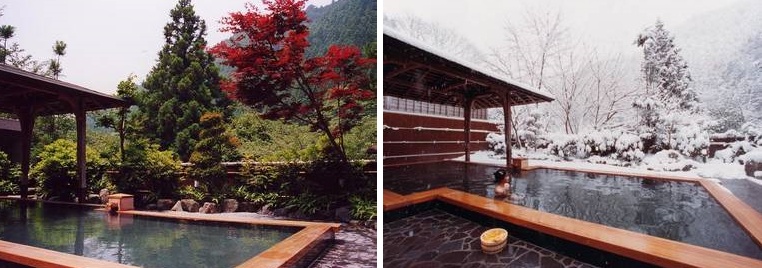
A beauty no matter the season | Images credit: Japan Experience
In the heart of Kurama lies Kurama Onsen, an unassuming onsen shrouded in tranquillity. Reinvigorate your weary minds and bodies here as you soak in waters drawn from natural sources in Mount Kurama. Allow yourself to be engulfed by the majestic Mother Nature as you marvel at the beautiful sight before you. If you are already reluctant to leave, mind you, your exploration of Kurama has only just begun!
Discover your inner cosmic energy at Kurama-dera
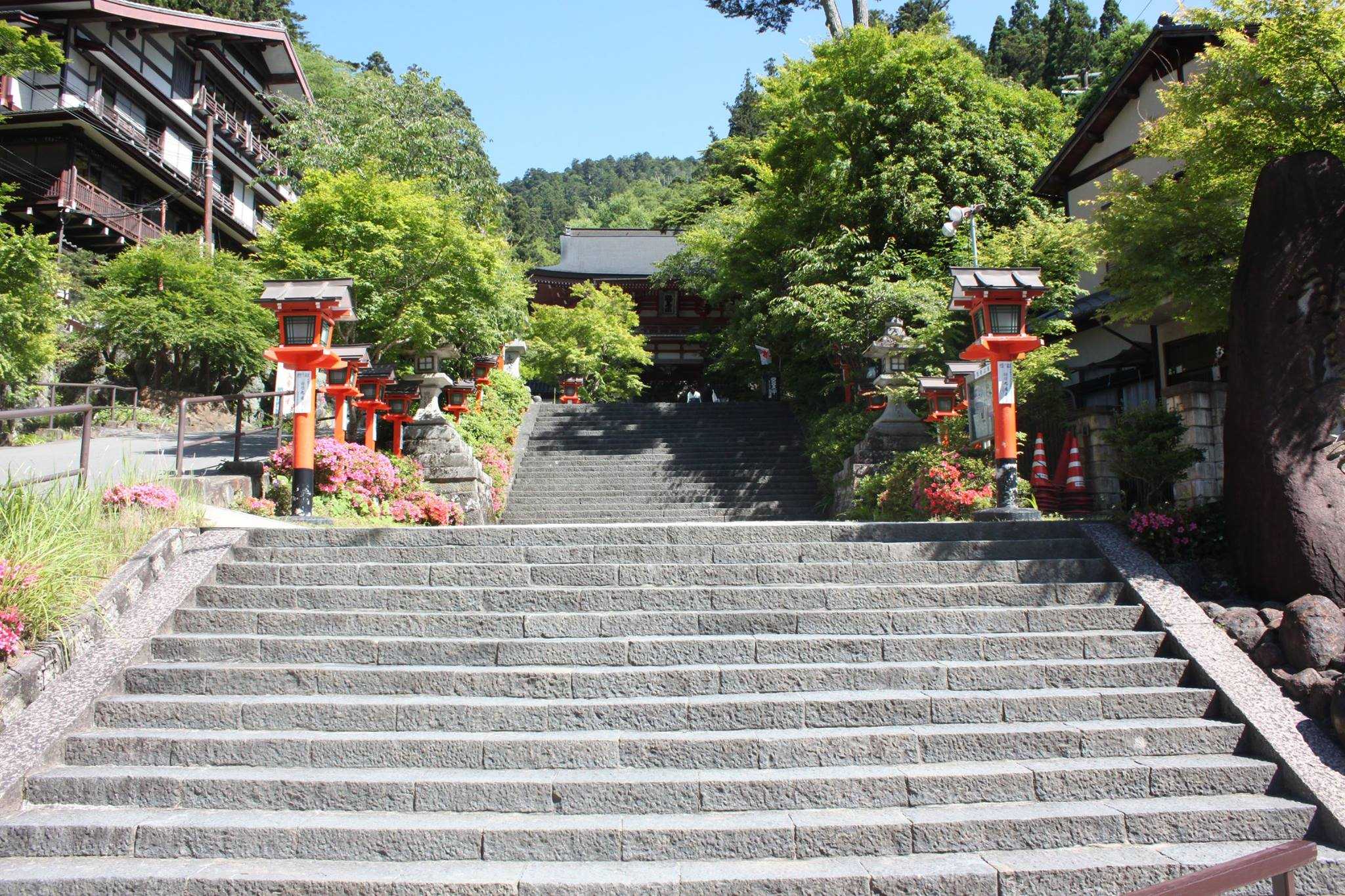
Follow the omens, follow your hearts.
To get to the Kurama-dera, follow this beautiful path to the entrance of the mountain. The first interesting thing to catch your eye as you step into the hallowed grounds of Mount Kurama is the forest of enormous cedar trees. Tied with Shimenawa (rice straw ropes), these are sacred trees said to be inhabited by spirits. In particular, look out for an 800 years old Japanese cedar tree that stands at a whooping 53 metres in Yuki Jinja (one of the first few shrines you will encounter) – it’s not everyday that you get to meet a tree that’s thirty times your age is it?
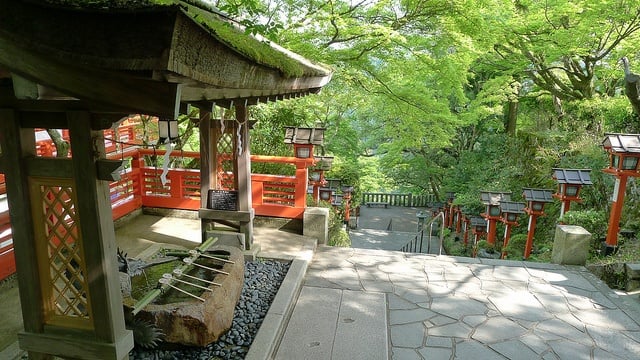
Enjoy tranquility on your ascent to Kurama-dera | Image credit: Felix Filnkoessl
Allow yourself to be captivated by the divine presence in the mountain! From the instance you step onto Mount Kurama, you will feel like you have been spirited away to another world. The serenity is unparalleled – one hears only the rustling of tree leaves and faint water trickling as the morning breeze weaves through the landscape. In that moment, the overwhelming sense of peacefulness will truly enable you see to pass all of this world’s sorrows and negativity.
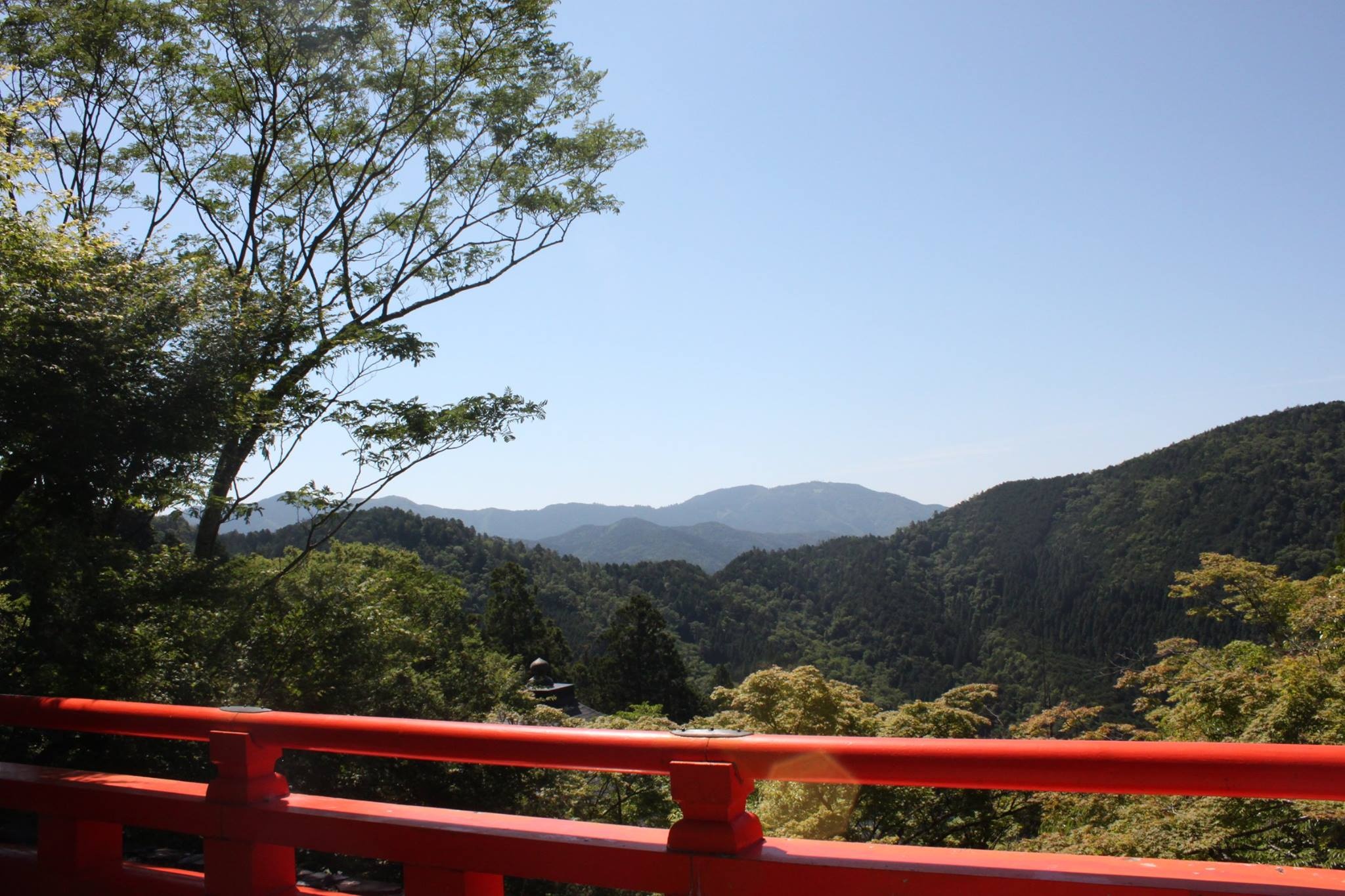
“I’m on the top of the world looking, down on creation..”
Be greeted by this amazing view as you arrive at the top of Mount Kurama. No wonder the mountain is such a perennial favourite amongst locals! Take your time to soak in the spirituality of the temple – through numerous wars and fires, this temple has come a very long hard way to be standing before you.
As you explore the temple’s premises, try to search for the Kongosho, a six-pointed star! (Hint: It’s on the ground). Its six edges represent the way humans interact with the world – our eyes, ears, nose, mouth, body and heart. The locals believe that if you stand on the right triangle stone in the centre while facing the main hall, your inner reiki will be awoken and you will feel a surge of energy rushing through you!
Take the sacred mountain trail from Kurama To Kibune
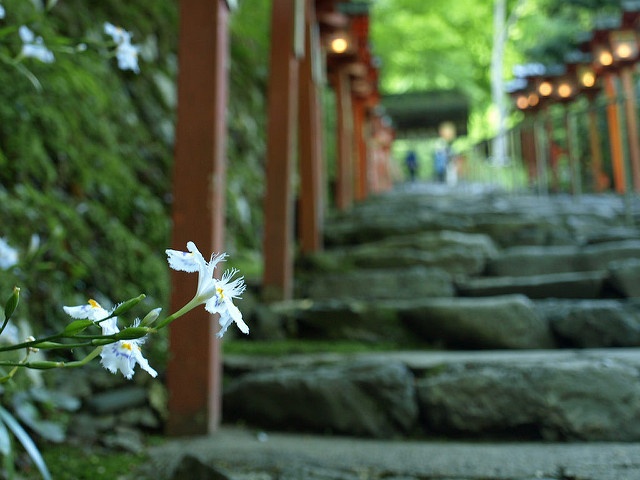
Find beauty even in the smallest of things | Image credit: merec0
You should hurry along now! It is imperative that you reach Kibune by 11.00am. You’ll find out why later. First of all, find the elusive entrance to the sando (sacred path) behind the temple’s main hall. Nearly 5km long, the sando connects Mount Kurama to Kibune.
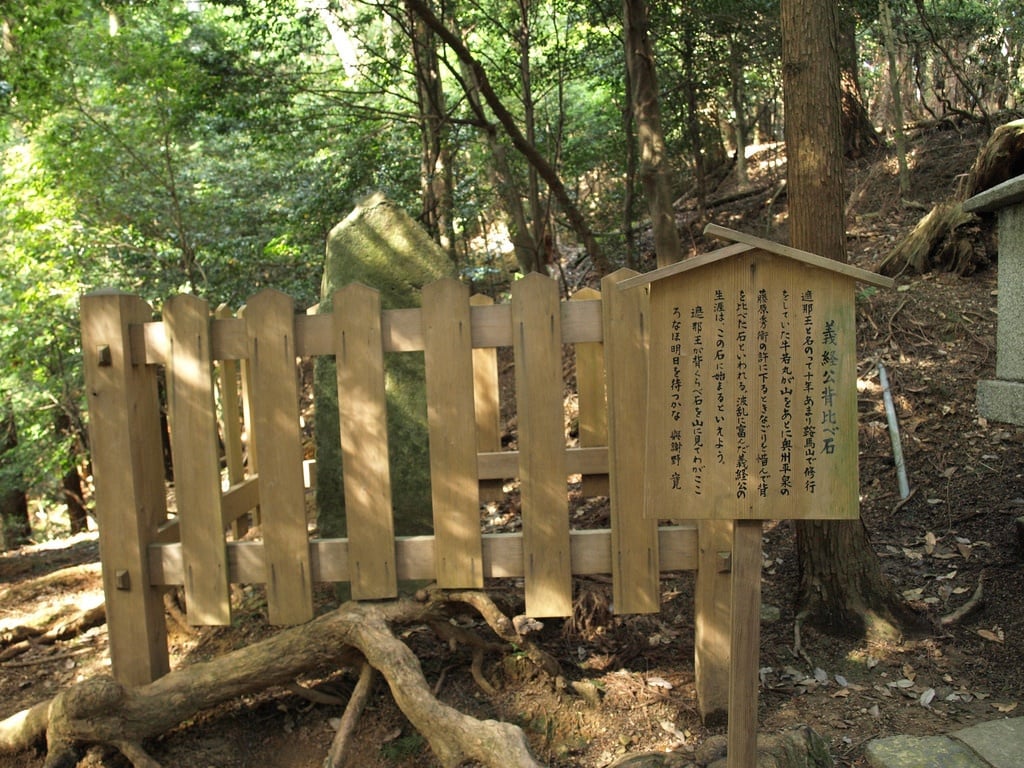
Height Comparing Rock | Image credit: merec0
From the entrance, continue your ascent to the top of the ridge. To ensure that you are on the right track, look out for the Yoshitsune Sekurabe Ishi (Height Comparing Rock) on your right! As its name suggests, Minamoto Yoshitsune, a 12th century warrior, had used this very rock to measure his height while he was receiving swordsmanship training from a Tengu on Mount Kurama. I certainly hope he outgrew the rock!
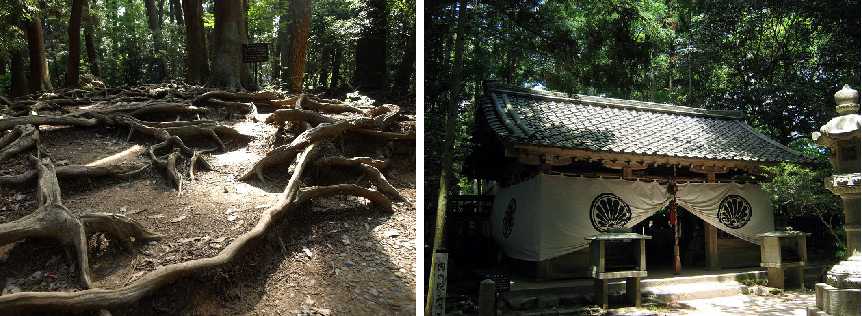
Kinone Sando | Image credit: merec0 Osugi-gongen | Image credit: kukan_johoshori
Stray off the main trail and follow along the ridge to the left – it’s called off the beaten path for a reason! You will encounter the enchanting Kinone Sando (Tree Root Path), which Ieads to Osugi-gongen. Legend has it that it was at this very shrine that Usui Mikao, the founder of reiki, fasted and meditated for 21 days before he received the gift of reiki. Now, as you immerse in the legends of this mountain, watch your steps! Be careful not to trip over the gnarled and tangled cedar tree roots littered all over the ground.
Not all who wander are lost. Head back to the Yoshitsune Sekurabe Ishi and you will find yourself back on the main trail. This time, take the path to the right. As you descend, you will come across Soja-ga-Dani Fudo-do, a shrine that houses the Immovable King of Light from Buddhist cosmology. Further down the trail is Oku-no-in Mao-den, the shrine of Mao the Magic King. The presence of these many shrines throughout the entire mountain truly adds to the ethereal aura it unceasingly emits!
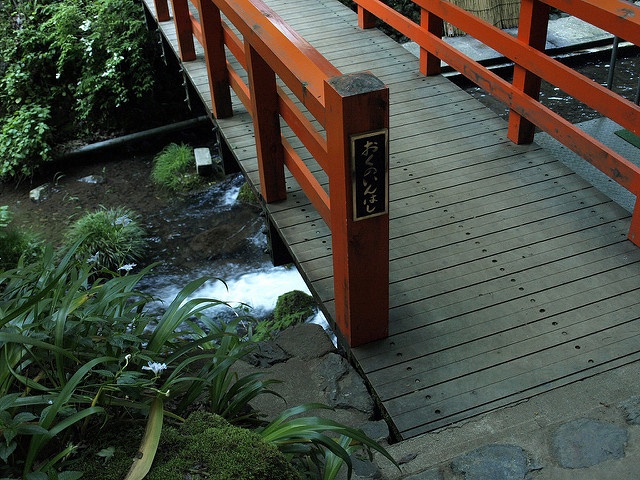
Done with the hike! | Image credit: merec0
After many flights of stairs later, look out for a little red bridge which marks the end of the hike. Well done, and welcome to the picturesque little village, Kibune.
Fish for your Nagashi Somen at Hirobun
Time check – it’s nearly 10.50am and you will be just in time for your lunch date with Hirobun! Although it opens only at 11am, you will find that there is already a snaking queue outside the unpretentious little restaurant by now. Locals and travellers alike swarm to Hirobun for a fun and completely novel of eating their noodles – FISH FOR IT!
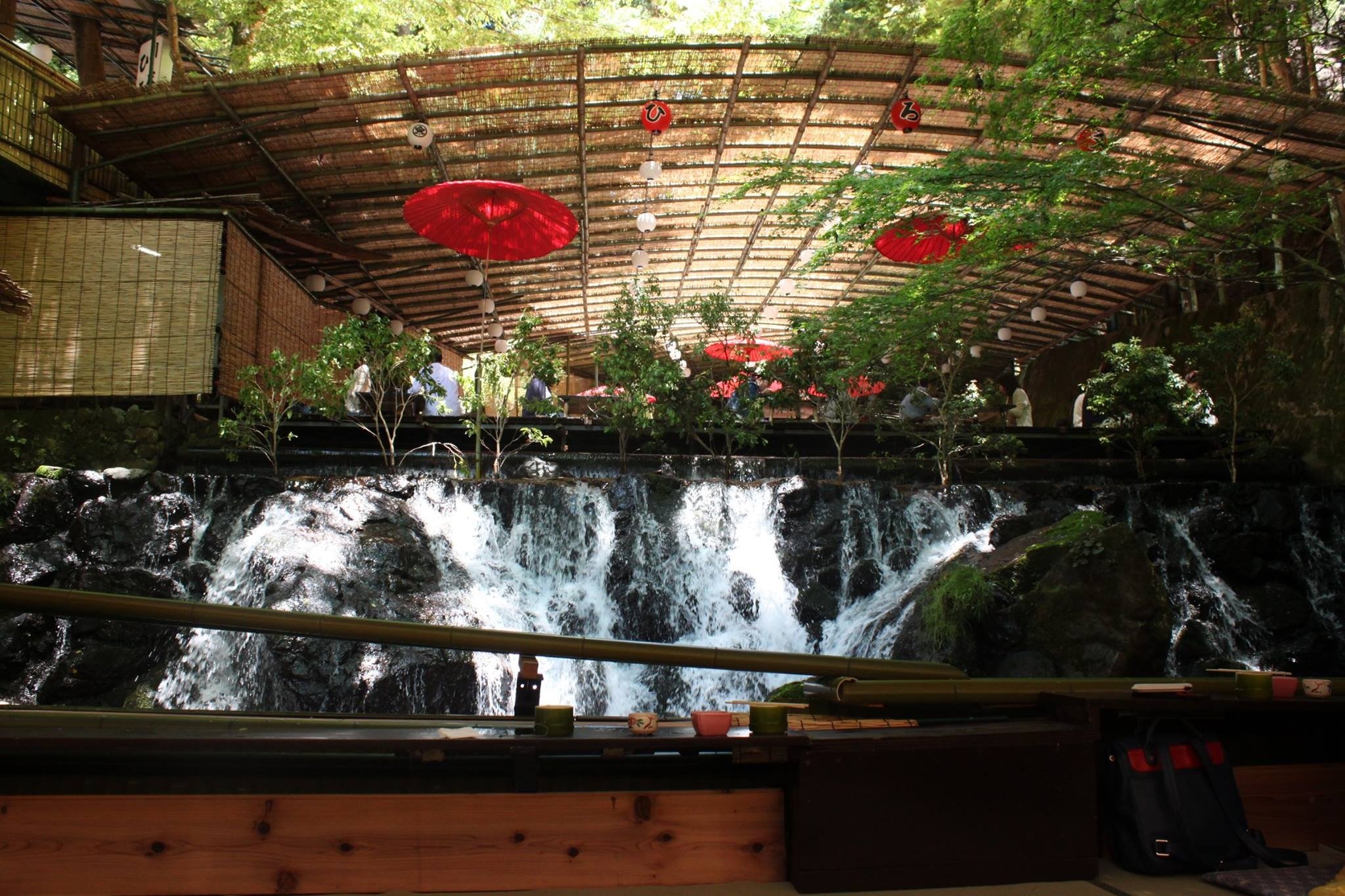
There’s an actual waterfall in Hirobun!
Known as Nagashi Somen, the waiters will slide white somen down streams of cold flowing water through bamboo pipes. Diners will then have to fish out the somen from their designated pipes before dipping it into sauce (like soba). When the red somen appears, that means it’s your final chance! Here’s the catch: The noodles are non-recyclable! If you miss them (the stream flows very quickly by the way), you will just have to leave with an empty stomach.
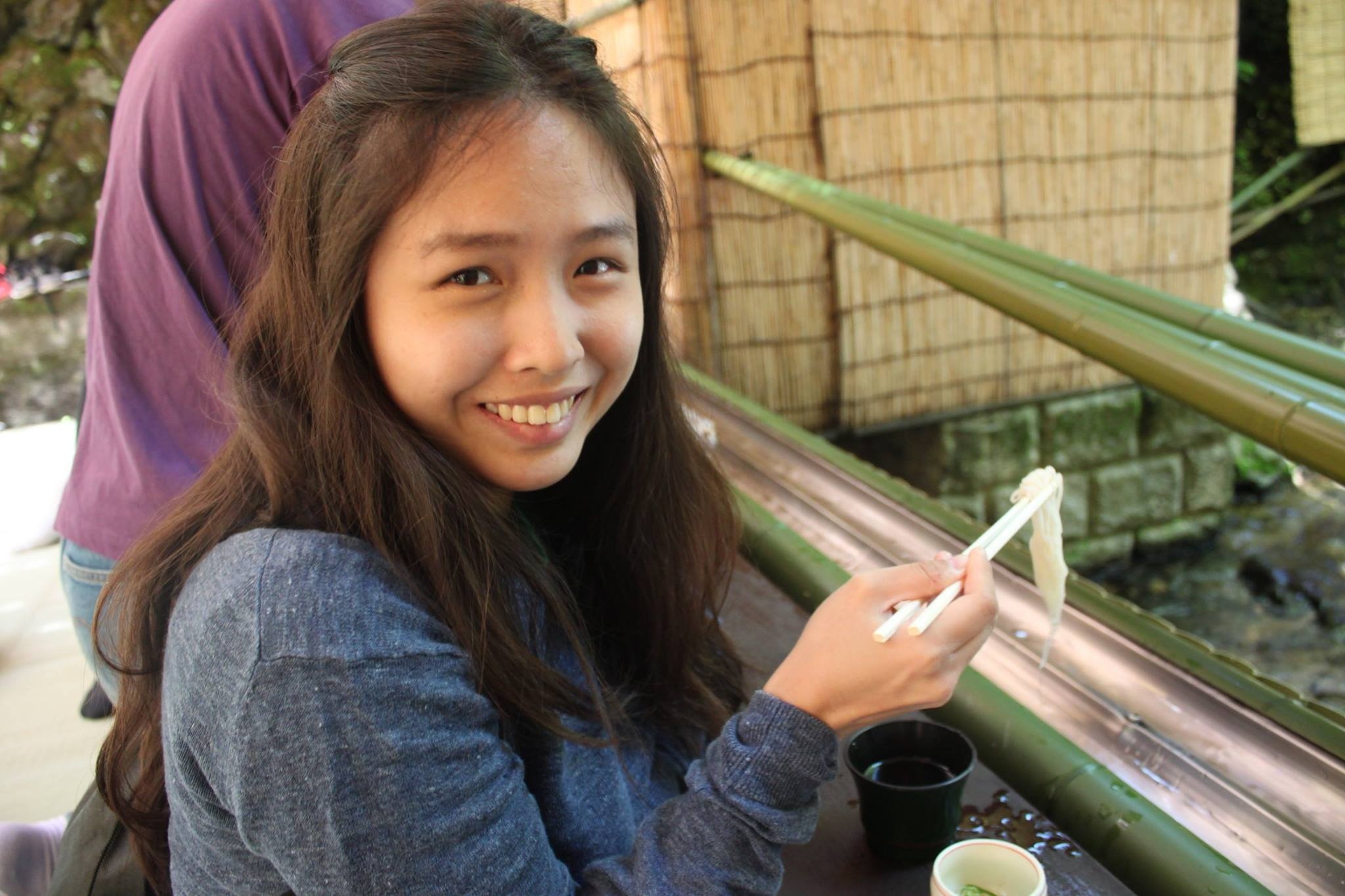
Delighted with my catch.
Do note that nagashi somen is only served during summer! This is in tandem with Kawadoko – a special Kyoto dining style adopted in summer where diners sit on matted ground next to a river. Here at Hirobun, enjoy the thrill of catching your somen while the refreshing coolness of a small waterfall surrounds you!

Doesn’t it look too pretty to be eaten? Yakimono – a summer speciality
After all that hiking, there’s definitely more space in your tummy for local delicacies! Hirobun also offers a traditional Japanese set lunch that uses only the freshest seasonal ingredients. The Kaiseki comes with a myriad of exquisite dishes, each flavourful in its own way. In particular, you must try the Yakimono (grilled Ayu fish), a must-have dish in every summer Kaiseki. Tantalising your taste buds, you will feel a rush of fragrant, sweet bitterness as you bite into the fish. By the way, the fish is to be eaten WHOLE, head and tail included. When in Rome, do as the Romans do!
Experience power spots in Kifune Shrine
Your final stop is the Kifune Shrine – an ancient shrine and popular “power spot”. Kifune Shrine enshrines Takaokami no Kami, the deity of water and rain, and is therefore known as a power spot that brings good fortune to those heading to sea. To experience its power yourself, be sure to check out Mizu-ura mikuji, or water paper fortune telling at the shrine. Mysteriously, fortunes will appear on empty fortune telling papers when you place them into the sacred pools in Kifune Shrine. Rumour has it that all these readings are also remarkably accurate!
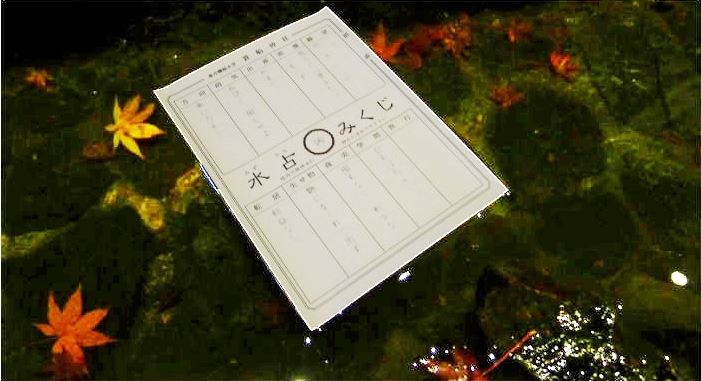
The deities know it all! | Image credit: Ikidane Nippon
Also, if you are concerned with being #foreveralone, Kifune will dispel all your worries. Along the Kifune river and up a slope from the temple’s main hall is Yui no Yashiro, a shrine dedicated to the deity of matchmaking. It is a popular power spot for those seeking true love! Purchase a Musubi-fumi for just 200JPY and write down your desires before tying them on the trees. The deities will be sure to hear you!
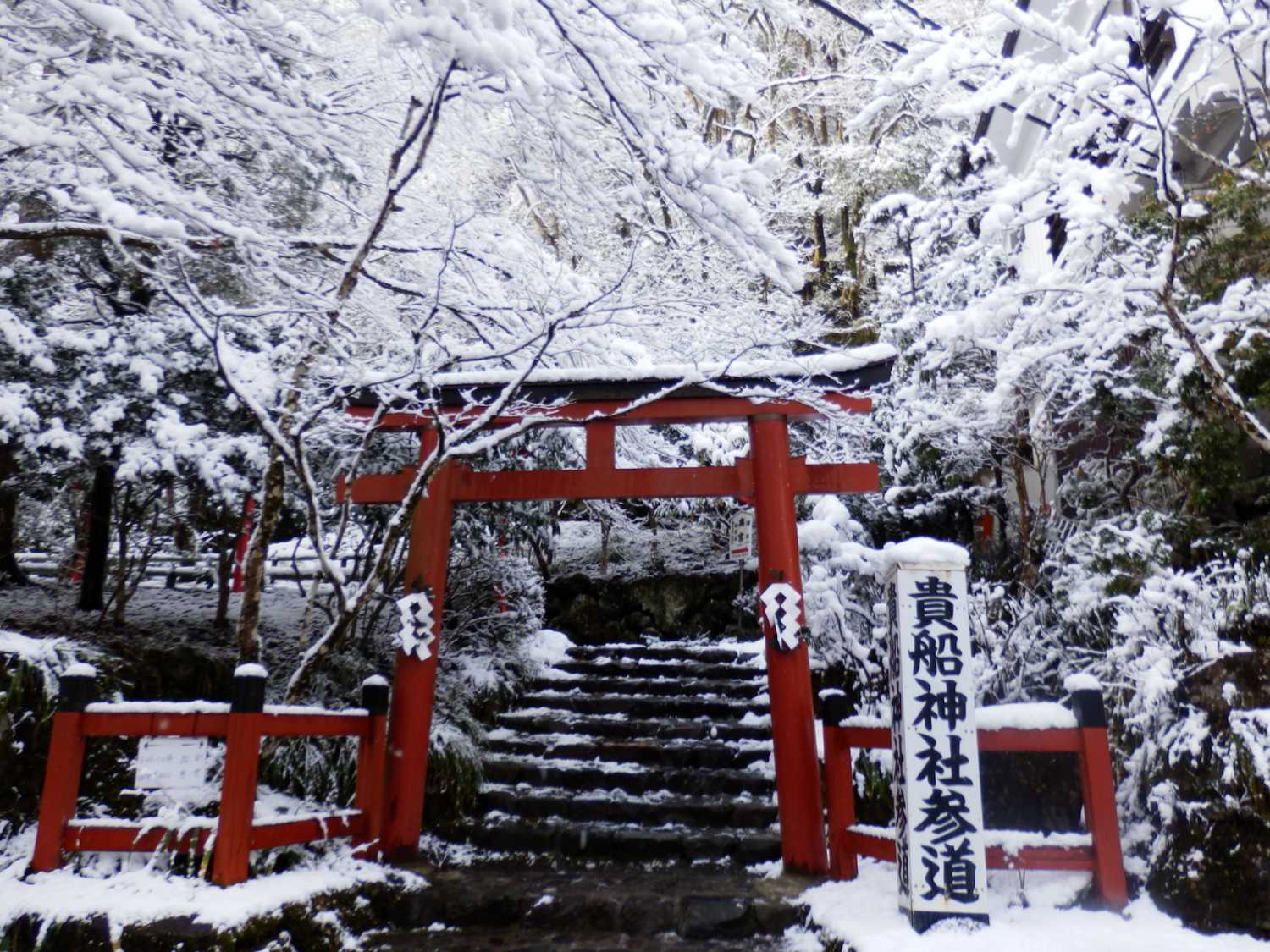
Kifune Shrine during Winter | Image credit: Izu Navi
If one describes Kurama as a noble King protected by his army of mythical creatures, then Kibune is the alluring beauty eager to show off her charm no matter what season. Kifune Shrine is a perfect candidate for scenic photographs, so take all the time you need here to capture these beautiful moments forever.
Enjoy a scenic train ride on Eizan Dentetsu
What a day! Bid your final farewells to Kurama and Kibune as you board the Eizan Dentetsu, or Eiden back to Kyoto. However, your adventure isn’t over yet! Keep your cameras ready and your eyes glued to the windows as Eiden passes through some of the best mountain scenes in Kibune and Kurama. During fall, the train even brings you through a tunnel of maple leaves, treating your eyes to brilliant hues of red and gold!
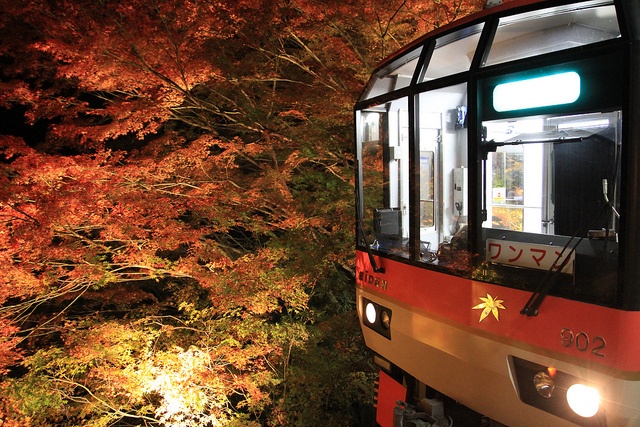
Relish in the last of these stunning mountain views | Image credit: Norio Nakayama
There is so much more to say about Kurama and Kibune, but I will leave you at that. My words can barely do justice to the amazing experiences in these two Japanese villages! So, make sure you visit Kurama and Kibune yourself – it will definitely be an unforgettable adventure.




